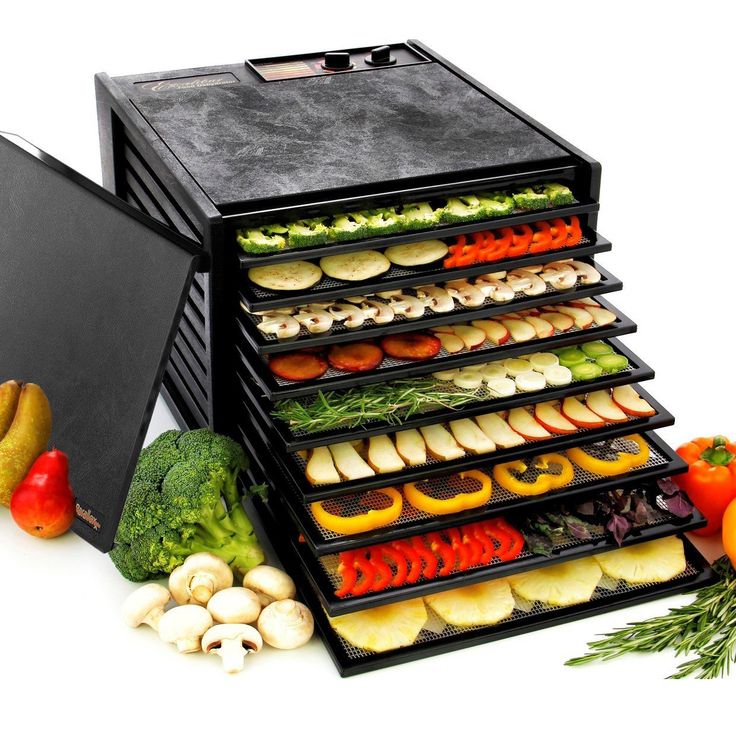Personal Protective Equipment, or PPE, is critical in safeguarding workers across various industries. The right equipment can mean the difference between safety and danger, from construction sites to manufacturing plants. With workplace hazards lurking everywhere, prioritizing reliable gear that protects employees from potential risks is more essential than ever. Are you ready to explore how innovative solutions cater to different job roles? Let’s dive deeper into selecting and maintaining the right Protective Equipment tailored to your industry needs!
The Importance of Protective Equipment (PPE) in Various Industries
Protective Equipment (PPE) is essential across industries, acting as a frontline defense against workplace hazards. In sectors like construction and manufacturing, workers face risks such as falling objects, chemical exposure, and machinery accidents. Quality PPE significantly minimizes these dangers.
Healthcare professionals rely on specialized equipment to protect themselves from infectious diseases and hazardous materials. Masks, gloves, and gowns are vital in preventing contamination and ensuring safety during patient care. The stakes are high regarding health; compromised protection can lead to dire consequences.
Appropriate gear plays a crucial role even in less obvious environments like laboratories or offices. Simple items like ergonomic chairs or anti-slip footwear contribute to overall well-being by reducing the risk of injury over time. Prioritizing PPE reflects an organization’s commitment to safeguarding its most valuable asset: its people.
Key Features of High-Quality PPE
Durability is crucial when selecting high-quality Protective Equipment (PPE). The materials should withstand harsh conditions without compromising safety. Look for PPE made from resistant fabrics or reinforced components that can endure wear and tear.
Comfort plays a vital role in ensuring consistent use. Equipment designed with ergonomic features allows workers to move freely while staying protected. Breathable materials help regulate temperature, reducing fatigue during long work hours.
Visibility is another key consideration, especially in hazardous environments. High-visibility colours and reflective strips enhance safety by making workers more noticeable. Quality PPE integrates these elements seamlessly, allowing individuals to perform their tasks confidently and safely without distraction.
Benefits of Using Reliable PPE for Workplace Safety
Reliable Protective Equipment (PPE) is crucial in enhancing workplace safety. It acts as the first line of defence against various hazards, reducing the risk of injuries and illnesses. Whether it’s hard hats on construction sites or gloves in manufacturing environments, dependable PPE safeguards employees from potential dangers.
Using high-quality PPE fosters a culture of safety within organizations. When their well-being is prioritized, employees feel valued, leading to increased morale and productivity. A safe workplace can reduce absenteeism due to accidents and illness, benefiting overall business performance.
Moreover, consistent use of reliable PPE minimizes liability risks for employers. Companies can avoid costly legal battles and insurance claims with fewer on-site incidents. This proactive approach demonstrates corporate responsibility while ensuring that teams are always protected.
A. Enhancing Safety in Construction Sites
Construction sites are bustling environments where safety must be a top priority. Workers face numerous hazards, from heavy machinery to falling objects. Protective Equipment (PPE) is crucial in mitigating these risks and ensuring workers return home safely daily.
High-quality helmets, gloves, and harnesses protect against head injuries, cuts, and falls. Reflective vests enhance visibility on busy job sites where multiple activities occur simultaneously. By investing in reliable PPE, construction companies comply with regulations and foster a culture of safety among their teams.
Training employees on proper PPE usage is equally important. Regular reminders about the significance of wearing equipment can enhance awareness and significantly reduce accidents. Creating an environment where every worker feels responsible for their safety improves morale and productivity across the entire site.
B. Ensuring Safety in Manufacturing Environments
Manufacturing environments can be hazardous, with heavy machinery and sharp tools posing significant risks. Protective Equipment is crucial in safeguarding workers from injuries caused by accidents or exposure to harmful substances. Using the right gear—gloves, goggles, and hard hats—ensures employees are shielded from potential dangers.
Moreover, it’s not just about protection; comfort matters too. Well-fitted PPE allows for greater mobility while performing tasks efficiently. When workers feel secure and comfortable in their equipment, productivity often increases alongside safety.
Regular training on proper PPE usage is also vital. Workers should understand the specific hazards and how to mitigate them with appropriate gear. This proactive approach fosters a culture of safety where everyone remains vigilant in protecting themselves and their colleagues.
How to Choose the Right PPE for Your Specific Needs?
Choosing the right Protective Equipment (PPE) is crucial for ensuring safety in any workplace. Start by assessing the specific hazards present in your environment. Different jobs pose various risks, from chemical exposure to physical injuries, so identify what protection you need.
Next, consider the comfort and fit of the PPE. Ill-fitting gear can hinder movement and reduce effectiveness. Always try on equipment when possible or consult sizing charts to find the perfect match.
Remember regulatory compliance as well. Ensure that your chosen PPE meets industry standards and certifications relevant to your field. This will keep employees safe and demonstrate a commitment to safety practices within your organization.
Innovations in PPE Design and Technology
Recent advancements in PPE design and technology have significantly enhanced safety standards across various industries. Smart helmets now feature integrated communication systems, allowing workers on construction sites to stay connected while minimizing distractions. These innovations help ensure that important instructions are heard without compromising worker focus.
Flexible materials are also transforming traditional gear into lighter, more comfortable options. This evolution allows for increased mobility without sacrificing protection levels. New breathable fabrics keep workers cool, reducing heat stress during long shifts.
Moreover, the rise of antimicrobial coatings is a game-changer in healthcare settings. These coatings prevent bacteria growth on surfaces like masks and gowns, ensuring higher hygiene standards. With continuous research and development, the future of PPE looks promising as it adapts to meet the evolving demands of various professions.
Customization Options for Different Job Roles
Customization of Protective Equipment (PPE) is essential for meeting the unique demands of various job roles. Different industries face distinct hazards, so a one-size-fits-all approach may not provide adequate protection. For instance, construction workers might require hard hats and steel-toed boots, while healthcare professionals need gowns and masks tailored for infection control.
Many manufacturers offer customizable options to ensure PPE fits the specific risks associated with each role and the individual’s measurements. This level of personalization enhances comfort and encourages consistent wear among employees, leading to better safety compliance.
Additionally, customization can include branding elements like company logos or colour schemes. This promotes team identity and fosters a culture of safety within organizations—reminding everyone that proper gear is an integral part of their work environment.
Tips for Proper Use and Maintenance of PPE
Proper use of Protective Equipment (PPE) starts with understanding your gear. Always read the manufacturer’s instructions and ensure you’re trained to wear it correctly. Fit is crucial; ill-fitting equipment can compromise safety. Adjust straps and fasteners for a snug yet comfortable fit.
Regular maintenance is vital for ensuring PPE remains effective. Inspect your equipment before each use, looking for signs of wear or damage, such as tears or cracks. Clean items according to guidelines, as dirt and residues can degrade materials over time.
Store PPE properly in a designated area away from direct sunlight and extreme temperatures when not in use. Keeping it organized helps prevent accidental damage while making it easy to access when needed.
Environmental Impact and Healthcare PPE Suppliers
The environmental impact of Protective Equipment (PPE) is a growing concern, particularly in the healthcare sector. Many disposable items contribute to significant waste and pollution, calling for more sustainable practices. Healthcare providers are increasingly seeking eco-friendly alternatives that minimize their carbon footprint.
Healthcare PPE suppliers are crucial in addressing this issue by introducing biodegradable materials and reusable options. Innovations such as recyclable gowns and compostable masks help reduce landfill contributions while maintaining safety standards for frontline workers.
Moreover, suppliers are focusing on responsible sourcing and manufacturing processes. By prioritizing sustainability throughout the supply chain, they can ensure that high-quality equipment doesn’t come at the expense of our environment. This balance is vital as healthcare continues evolving in response to patient needs and ecological responsibility.
Cost Considerations and Budget-Friendly PPE Solutions
Cost can be a significant concern for businesses when it comes to Protective Equipment (PPE). Investing in high-quality PPE is crucial for ensuring safety, but budget-friendly options are available. It’s essential to find the right balance between affordability and reliability.
Many suppliers offer tiered pricing structures that cater to different budgets. Buying in bulk can also lead to substantial savings without compromising on quality. It’s worth exploring reputable brands known for their durability and effectiveness while remaining mindful of your financial limitations.
Additionally, consider seeking local manufacturers or distributors who may provide competitive prices. This can help support the community and often results in quicker delivery times and personalized customer service tailored to your needs.
Conclusion
The world of Personal Protective Equipment PPE) is constantly evolving. With new materials and technologies, safety gear has never been more reliable or effective. Investing in high-quality PPE protects workers and enhances overall productivity across various industries. As companies prioritize employee well-being, the importance of customized solutions becomes clear. Tailoring PPE to specific job roles can improve comfort and usability, ultimately fostering a safer work environment. Awareness about environmental impacts drives innovation as well. Many manufacturers are now focusing on sustainable practices while maintaining quality standards for their equipment. This shift promises a future where safety and ecological responsibility go hand in hand, creating a win-win situation for workers and the planet.
Frequently Asked Questions (FAQs)
What is considered Personal Protective Equipment?
Personal Protective Equipment includes gear designed to protect the wearer from potential hazards at work—from helmets, gloves, goggles, earplugs, and respirators to full-body suits, depending on the environment.
How do I know what type of PPE I need?
Identifying your needs starts with assessing the job-specific risks associated with your tasks. Consulting with safety professionals or following OSHA guidelines will help you choose appropriate gear tailored to protect against those risks.
Can I reuse my PPE?
Some types of PPE are designed for single use only, while others may be reused after proper cleaning and inspection. Always check manufacturer guidelines before making decisions about reusing any protective gear.
Are there regulations regarding PPE?
Yes, many countries have strict regulations governing the use of Protective Equipment at workplaces, which aim to reduce injuries and illnesses related to occupational hazards; familiarizing yourself with these laws is essential for compliance.
Where can I find reliable suppliers for high-quality PPE?
You should look for reputable suppliers known for certified products that meet regulatory standards within your industry; online reviews or recommendations from colleagues may guide you toward trustworthy sources.
| Related Business Listings |
| Contact Directory |
| Local Business Profiles |



